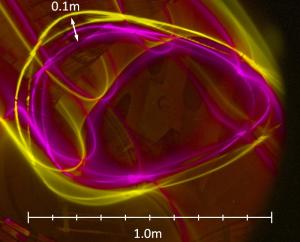Wendelstein achieves ultra-precise magnetic topology
A recent article in the online journal Nature Communications confirms that the complex topology of the magnetic field of Wendelstein 7-X—the world's largest stellarator—is highly accurate, with deviations from design configuration measured at fewer than 1-in-100,000.
In the complex shape of a stellarator, high engineering accuracy is needed because even the smallest magnetic field errors can have a large effect on the magnetic surfaces and the confinement of the plasma.


